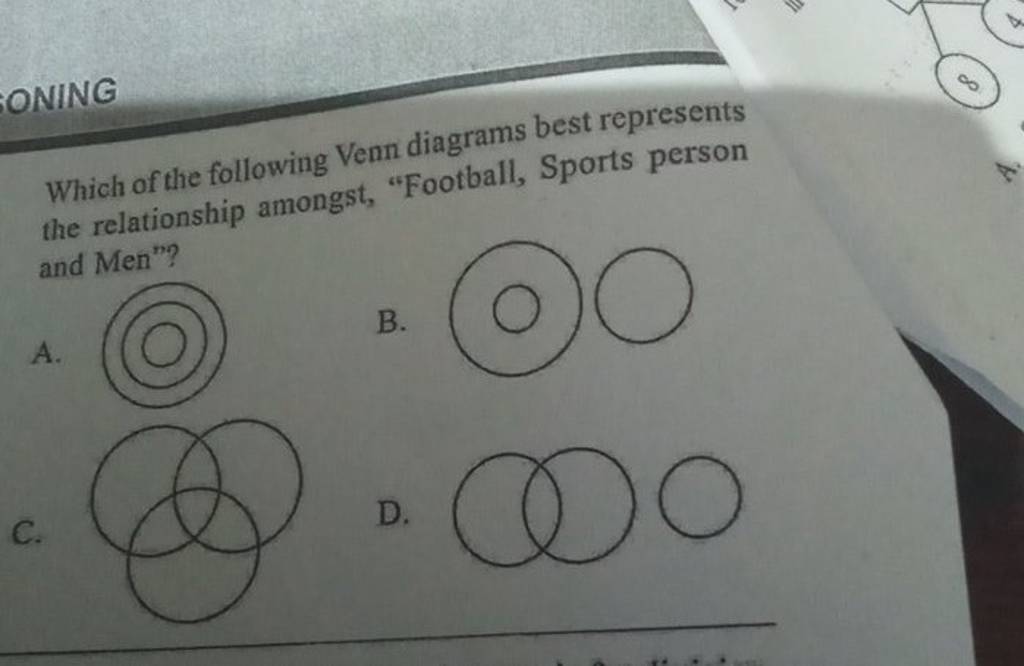Wasp and Hornet Foraging Ranges: How Far These Insects Travel From Their Nests
Understand wasp and hornet forage behavior
Wasps and hornets are fascinating insects with complex behaviors, peculiarly when it comes to their forage patterns. One of the near common questions people ask about these stinging insects is how far they travel from their nests. This information is not scarce interesting from a biological perspective but have practical applications for homeowners and outdoor enthusiasts who want to avoid unwanted encounters.

Source: tffn.net
How far do wasps travel from their nests?
The distance wasp travel from their nests vary importantly depend on the species, food availability, weather conditions, and time of year. Nonetheless, research has provided some general guidelines about their typical foraging ranges.
Common wasp species and their forage ranges
Paper wasps (ppolishesspecies )typically forage within a range of 300 1,000 feet ( ( 300 meters ) )om their nests. These wasps are common in residential areas and build the familiar outdoors cellceller nests oftentimes find under eaves and overhangs.

Source: tffn.net
Yellow jackets (vVistulaspecies ) which are among the near aggressive wasp species in noNorth Americabroadly travel far. They usually forage within a radius of 1,000 1,500 feet ( (0 450 meters ) )om their nest but can go lots far when necessary.
European hornets (vVespacCairo))ave been document travel up to 2 miles ( 3( kilometers ) f)m their nests when foragforagedugh they typically stay within a 1 mi1-mileius.
Factors affect wasp travel distance
Several factors will influence how far wasps will travel from their nests:
-
Food availability:
When food is scarce near the nest, wasps will travel far to find resources. Conversely, if food is abundant nearby, they will stay closely to home. -
Colony size:
Larger colonies require more food, which may force foragers to travel greater distances to meet the colony’s needs. -
Season:
Late summer and fall oftentimes see wasps travel far as they search for food to support the colony’s production of new queens and males. -
Weather conditions:
Wasps loosely don’t fly in heavy rain or strong winds. They prefer to forage on warm, sunny days when they can travel far.
How far do bald faced hornets travel from their nest?
Bald faced hornets (dolichovespula mmaculate)are not true hornets but a type of yeyellow jacketasp native to nNorth America They’re kknownfor their distinctive black and white coloration and for build large, enclose paper nests that can be the size of a basketball or larger.
Typical foraging range
Bald faced hornets broadly forage within a radius of 700 1,500 feet (210 450 meters )from their nest. Yet, they can travel up to 2,000 feet ( (0 meters ) ) more when necessary, peculiarly if food sources near the nest become deplete.
These insects are predatory and feed principally on other insects, include flies, caterpillars, and yet other yellow jackets. They besides collect nectar from flowers and sweet substances like tree sap and fruit juices. This diverse diet influences their forage patterns and the distances they travel.
Territorial behavior of bald faced hornets
Bald faced hornets are extremely territorial and will sharply will defend an area around their nest. This defensive zone typically extend around 100 300 feet (30 90 meters )from the nest, though it can vary base on the colony’s size and the surround environment.
Within this territory, bald faced hornets are especially sensitive to vibrations and perceive threats. Activities like lawn mowing, trim trees, or yet walk also conclusion to the nest can trigger a defensive response from multiple hornets simultaneously.
Compare wasp and hornet forage distances
| Species | Typical foraging range | Maximum recorded distance |
|---|---|---|
| Paper wasps | 300 1,000 feet (90 300 meters ) | 1,500 feet (450 meters ) |
| Yellow jackets | 1,000 1,500 feet (300 450 meters ) | 1 mile (1.6 kilometers ) |
| Bald faced hornets | 700 1,500 feet (210 450 meters ) | 2,000 + feet (610 + meters ) |
| European hornets | Up to 1 mile (1.6 kilometers ) | 2 miles (3.2 kilometers ) |
Scientific research on wasp and hornet foraging
Researchers have use various methods to track wasp and hornet forage patterns, include mark recapture studies, radio tracking, and observational techniques. These studies have revealed interesting insights about how these insects navigate and select forage locations.
Navigation abilities
Wasps and hornets have impressive navigational abilities, use visual landmarks, the position of the sun, and perchance evening earth’s magnetic field to find their way rearwards to the nest after forage. They can remember the locations of good food sources and return to them repeatedly.
Research has shown that wasps create mental maps of their surroundings, learn the positions of landmarks relative to their nest. This spatial memoryallowsw them to take direct routes between the nest and know food sources, save energy and time.
Communication about food sources
Unlike honeybees, wasps and hornets don’t perform elaborate dances to communicate the location of food sources. Yet, they do have methods of alert nest mates to good forage opportunities:
- Return foragers may release pheromones that excite other workers.
- Successful foragers oftentimes share liquid food with nest mates, which may contain chemical cues about the food source.
- Observational learning occur when wasps follow experienced foragers to food sources.
Practical implications of wasp and hornet foraging range
Understand how far wasps and hornets travel from their nests have several practical applications for homeowners, outdoor workers, and pest management professionals.
For homeowners
If you’ve found a wasp or hornet nest on your property, know their typical foraging range can help you assess the risk to your outdoor activities. For example:
- A paper wasp nest under your eaves might mean wasps forage throughout your yard but plausibly not affect neighbors several houses outside.
- A bald faced hornet nest in a tree could impact activities within about 1,000 feet, potentially affect multiple neighboring properties.
- Remove attractive food sources (like uncovered garbage cans or fall fruit )within the forage range can reduce wasp activity near your home.
For pest management
Pest control professionals use knowledge of forage range when:
- Locate nests base on wasp activity patterns
- Determine the effective radius for bait stations
- Advise clients about the potential spread of wasps from neighboring properties
- Planning control measures for large outdoor events
Reduce encounters with forage wasps and hornets
To minimize your chances of encounter wasps and hornets while their forage:
Around your home
- Keep food and drinks cover when eat outside
- Secure garbage can lids tightly
- Clean up fallen fruit quickly
- Avoid wear bright colors and floral patterns that might attract wasps
- Minimize the use of sweet smell perfumes, lotions, and hair products when outside
- Consider use wasp traps around the perimeter of outdoor eat areas
When hiking or camping
- Be alert for wasp and hornet activity, particularly around flower plants and water sources
- Keep food seal when not in use
- Check drinks before sip to ensure no wasps have land in them
- Move slow and sedately if wasps are present — rapid movements may trigger defensive behavior
Seasonal changes in forage patterns
The forage behavior of wasps and hornets changes throughout their active season, which typically run from spring through fall in temperate regions.
Spring
In spring, freshly emerge queen wasps and hornets are established nests and initially forage solitary. Their range is oftentimelimitedit as they balance nest building with food collection. During this period, they principally seek protein sources like insects to feed develop larvae.
Summer
As worker numbers increase through summer, the colony’s forage range expand. Workers specialize in different tasks, with some dedicate to hunt prey and others collect nectar or scavenge for carbohydrate sources. This is when the typical foraging ranges mention betimes are near applicable.
Late summer and fall
In late summer and fall, wasp and hornet colonies reach their peak size, and their food need increase dramatically. This is when they’re near likely to push the boundaries of their typical forage range. Additionally, their food preferences oftentimes shift toward sugar sources as they prepare to produce new queens and males. This is why wasps and hornets become more noticeable around picnics, outdoor meals, and garbage areas in late summer.
Ecological importance of wasp and hornet foraging
Despite their reputation as nuisance insects, wasps and hornets play important ecological roles through their forage activities:
-
Pest control:
A single wasp colony can capture thousands of insects, include many agricultural and garden pests, during a season. -
Pollination:
While not equally efficient as bees, wasps and hornets do transfer pollen between flowers while forage for nectar. -
Food web support:
Wasps and hornets serve as prey for birds, reptiles, amphibians, and other predators.
The forage ranges of these insects help determine their ecological impact across landscapes. For example, the fact that bald faced hornets can forage up to 2,000 feet from their nest mean a single colony can provide pest control services across several acres of land.
Conclusion
The forage ranges of wasps and hornets represent a fascinating aspect of their biology that have both scientific interest and practical implications. While paper wasps typically stay within 1,000 feet of their nests, yellow jackets may range up to 1,500 feet, and bald faced hornets normally forage within a similar range but can travel far when necessary. European hornets have the near extensive forage range, sometimes travel up to 2 miles from their nest.
Understand these patterns can help us coexist more safely with these insects, which despite their fearsome reputation, provide valuable ecological services through their predation on pest insects and limited pollination activities. By recognize how far these insects typically travel from their nests, we can advantageously manage our outdoor spaces to reduce unwanted encounters while ease benefit from their natural pest control services.
Whether your dedealtith a nest on your property or merely curious about the behavior of these fascinating insects, know about their forage ranges provide valuable insight into their ecology and behavior. This knowledge can help inform practical decisions about nest removal, outdoor activities, and appreciation for the complex lives of these oftentimes misunderstood creatures.



